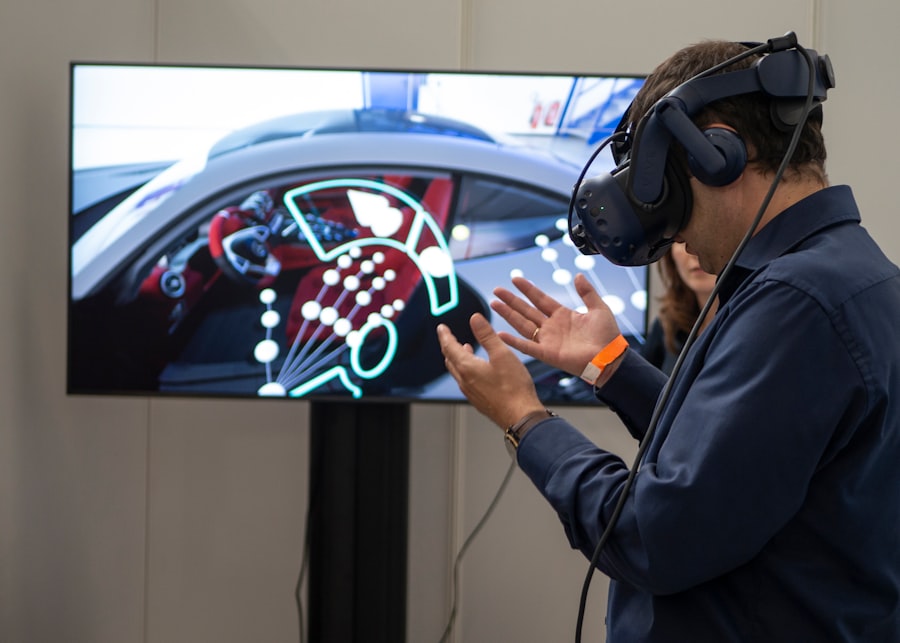Download links
How to install Exploring the Virtual Life: A Journey into Digital Realms APK?
1. Tap the downloaded Exploring the Virtual Life: A Journey into Digital Realms APK file.
2. Touch install.
3. Follow the steps on the screen.
Description
The concept of virtual reality (VR) has its roots in the early 20th century, with pioneers like Edward Link creating the first flight simulator in 1929. This rudimentary device, known as the Link Trainer, allowed pilots to practice flying in a controlled environment, laying the groundwork for immersive experiences. However, it wasn’t until the 1960s that the term “virtual reality” began to take shape.
Ivan Sutherland, often referred to as the father of computer graphics, developed the first head-mounted display system, known as the “Sword of Damocles.” This device was a bulky contraption that displayed simple wireframe graphics, but it marked a significant leap toward creating immersive digital environments. The 1980s and 1990s saw a surge in interest and investment in VR technology, spurred by advancements in computer graphics and processing power. Companies like VPL Research introduced products such as Data Glove and EyePhone, which allowed users to interact with virtual environments more intuitively.
Despite the excitement, the technology was still in its infancy, and high costs limited accessibility. The gaming industry began to explore VR with titles like “Dactyl Nightmare,” but widespread adoption remained elusive. It wasn’t until the 2010s that VR began to gain traction among consumers, thanks to the efforts of companies like Oculus VR, which launched a successful Kickstarter campaign for the Oculus Rift in 2012.
This marked a turning point, as it brought VR into the mainstream consciousness and set the stage for a new era of digital interaction.
Key Takeaways
- Virtual reality has a long history, dating back to the 1950s, and has evolved significantly over the years.
- Understanding virtual environments is crucial for navigating the digital landscape and making the most of virtual reality experiences.
- Virtual life has a significant impact on society and culture, influencing everything from entertainment to communication.
- Virtual relationships are a key aspect of the digital world, offering new ways to connect and interact with others.
- Living in virtual realms can have psychological effects, both positive and negative, that should be considered.
Navigating the Digital Landscape: Understanding Virtual Environments
Virtual environments are intricate digital spaces designed to simulate real-world or fantastical settings, allowing users to engage with them through various sensory modalities.
The technology behind these virtual landscapes often incorporates elements such as computer graphics, artificial intelligence, and sensory feedback systems to create an immersive experience.
Users can navigate these spaces using devices like VR headsets, motion controllers, or even haptic suits that provide tactile feedback. Understanding virtual environments requires an appreciation of how they are constructed and the principles that govern user interaction within them.
Additionally, the design of these environments often considers user psychology and behavior. Developers employ techniques such as affordances—visual cues that suggest how an object can be interacted with—to guide users through their experiences. This careful orchestration of visual and auditory elements is crucial for creating a seamless and engaging virtual experience.
The Impact of Virtual Life on Society and Culture

The proliferation of virtual life has had profound implications for society and culture, reshaping how individuals interact with one another and perceive their realities. One of the most significant impacts is the democratization of access to information and experiences. Virtual platforms allow individuals from diverse backgrounds to connect, share ideas, and collaborate on projects regardless of geographical barriers.
Virtual Relationships: Exploring Connections in the Digital World
| Chapter | Metrics |
|---|---|
| Chapter 1 | Number of virtual connections |
| Chapter 2 | Percentage of online communication |
| Chapter 3 | Impact of social media on relationships |
| Chapter 4 | Virtual trust and intimacy levels |
The nature of relationships has undergone a transformation in the age of virtual life, as individuals increasingly turn to digital platforms for social interaction. Virtual relationships can take many forms, from friendships forged in online gaming communities to romantic connections developed through dating apps. These relationships often transcend geographical boundaries, allowing individuals to connect with others who share similar interests or experiences.
For instance, online gaming platforms like Discord have become hubs for social interaction, where players can form friendships while collaborating on gameplay strategies or simply chatting about shared interests. However, while virtual relationships can offer meaningful connections, they also present unique challenges. The lack of physical presence can lead to misunderstandings or miscommunications that might not occur in face-to-face interactions.
Additionally, individuals may curate their online personas in ways that do not fully reflect their true selves, leading to potential disillusionment when transitioning from virtual interactions to real-life encounters. Despite these challenges, many people find solace in virtual relationships, particularly those who may struggle with social anxiety or feel marginalized in their offline lives. The ability to connect with others who share similar experiences can foster a sense of belonging that transcends physical limitations.
Escaping Reality: The Psychological Effects of Living in Virtual Realms
The allure of virtual realms often lies in their capacity to provide an escape from the complexities and stresses of everyday life. For some individuals, immersing themselves in a digital environment offers a reprieve from reality—a chance to explore new identities or engage in activities that may be difficult or impossible in the physical world. This escapism can be particularly appealing for those facing challenges such as mental health issues or social isolation.
Virtual worlds provide a safe space where individuals can experiment with different aspects of their identities without fear of judgment. However, this escape can also have psychological ramifications. Prolonged immersion in virtual environments may lead to difficulties in distinguishing between reality and fantasy.
Some individuals may develop an unhealthy attachment to their virtual lives, prioritizing online interactions over real-world relationships and responsibilities. This phenomenon has been observed in various contexts, including gaming addiction and excessive use of social media platforms. Mental health professionals have raised concerns about the potential for these behaviors to exacerbate feelings of loneliness or depression when individuals find themselves unable to engage meaningfully with their offline lives.
The Future of Virtual Life: Trends and Innovations in Digital Worlds

As technology continues to evolve at a rapid pace, the future of virtual life promises exciting innovations that will further enhance our digital experiences. One notable trend is the integration of augmented reality (AR) with virtual reality (VR), creating mixed-reality environments that blend digital elements with the physical world. This convergence allows for new forms of interaction and engagement; for example, AR applications like Pokémon GO have demonstrated how digital content can overlay real-world environments, encouraging users to explore their surroundings while interacting with virtual elements.
Additionally, advancements in artificial intelligence are poised to revolutionize how we experience virtual life. AI-driven characters and environments can create more dynamic and responsive interactions within virtual spaces. Imagine entering a virtual world where non-player characters (NPCs) exhibit realistic behaviors and adapt their responses based on user interactions—this level of sophistication could lead to richer storytelling experiences and more immersive gameplay.
Furthermore, developments in haptic technology promise to enhance sensory feedback within virtual environments, allowing users to feel textures or sensations that mimic real-world interactions. As we look ahead, it is clear that virtual life will continue to shape our social interactions, cultural expressions, and psychological experiences in profound ways. The ongoing evolution of technology will undoubtedly bring forth new opportunities for connection and creativity while also challenging us to navigate the complexities that arise from living increasingly digital lives.
If you’re interested in exploring the world of online gaming and virtual life, you may want to check out this article on 8k8 Laro: Panduan Bermain Game Online Terbaru. This article provides tips and tricks for playing the latest online games and immersing yourself in virtual worlds. It’s a great resource for anyone looking to enhance their gaming experience and dive deeper into the world of virtual life.
FAQs
What is virtual life?
Virtual life refers to the experience of living and interacting in a digital or virtual environment, often through the use of technology such as virtual reality, augmented reality, or online platforms.
What are some examples of virtual life?
Examples of virtual life include virtual reality games and simulations, social media platforms, online communities, and virtual worlds such as Second Life and The Sims.
How does virtual life differ from real life?
Virtual life differs from real life in that it takes place in a digital or simulated environment, and the interactions and experiences are mediated by technology. While virtual life can offer a sense of escapism and creativity, it may not always accurately reflect the complexities and nuances of real life.
What are the benefits of virtual life?
Some potential benefits of virtual life include opportunities for creativity and self-expression, the ability to connect with others from around the world, and the potential for immersive and engaging experiences.
What are the potential drawbacks of virtual life?
Drawbacks of virtual life may include issues related to privacy and security, the potential for addiction or over-reliance on technology, and the risk of disconnecting from real-life relationships and experiences.
How is virtual life impacting society?
Virtual life is impacting society in various ways, including influencing how people socialize, work, and entertain themselves. It has also raised questions about the boundaries between the digital and physical worlds, and the implications for mental health and well-being.





